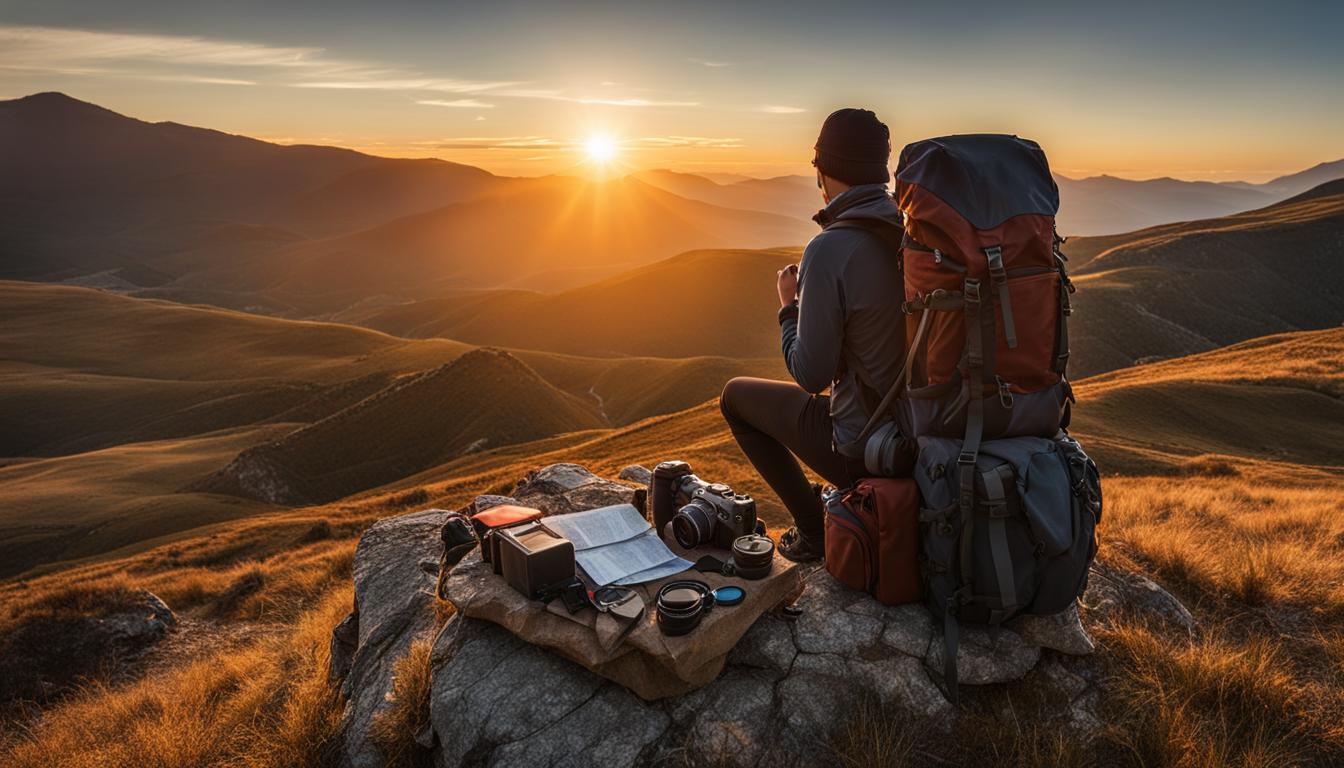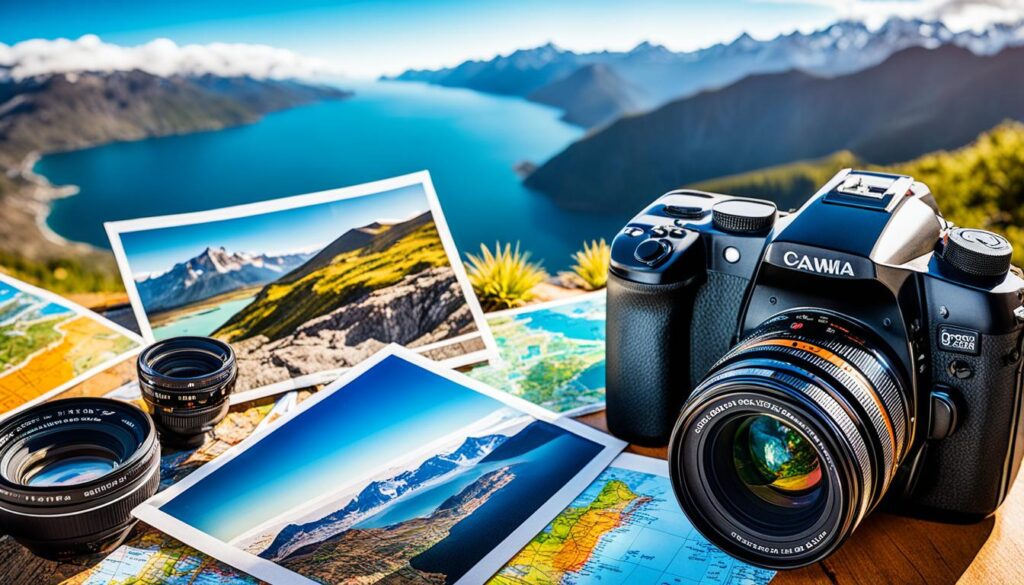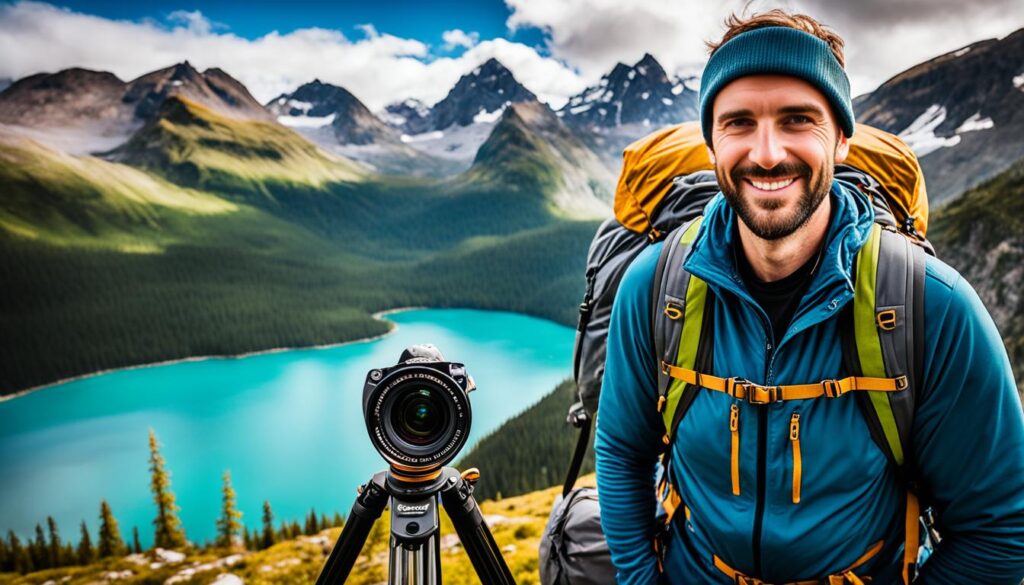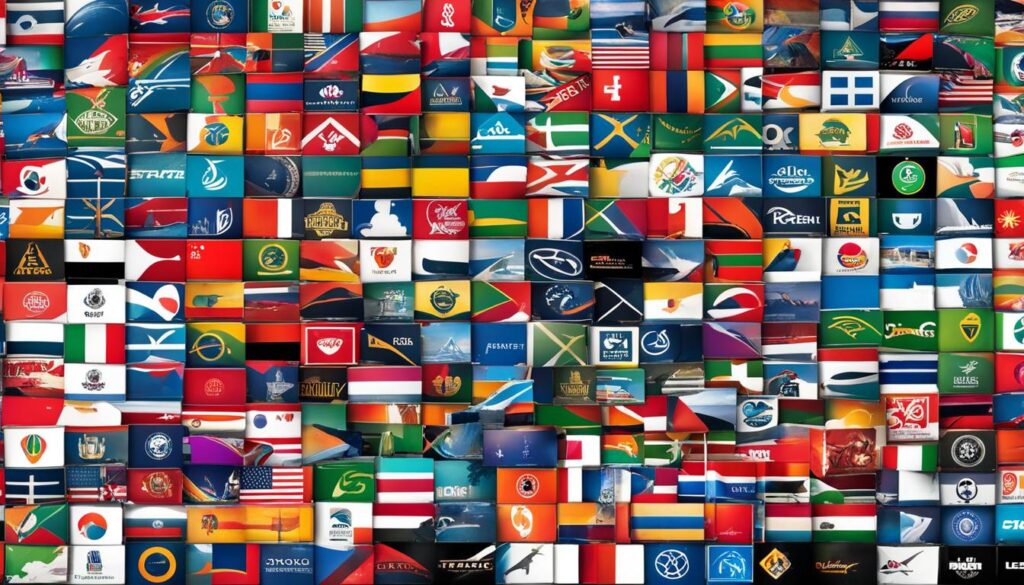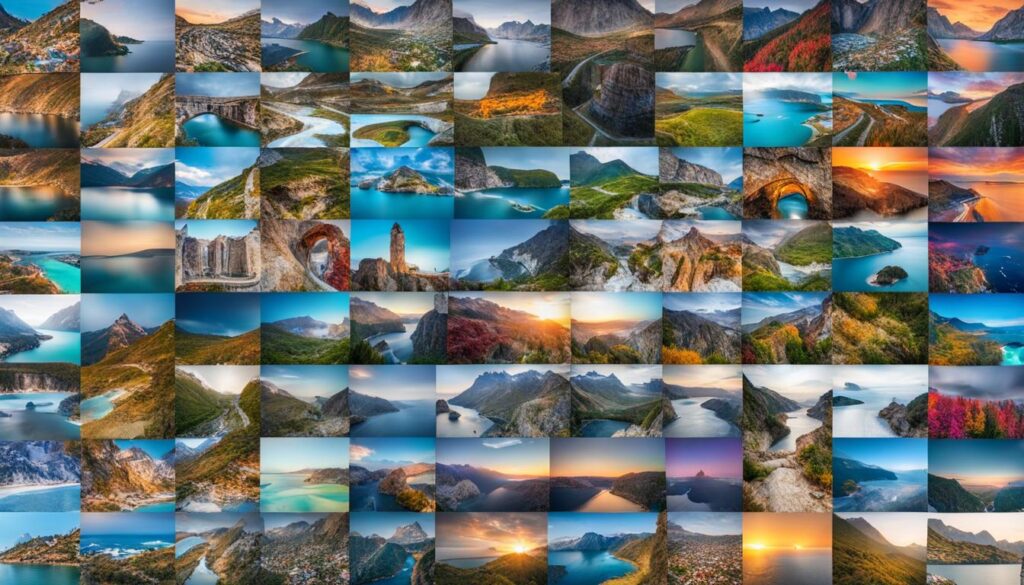How to Become a Travel Photographer
Have you ever felt the irresistible urge to capture the breathtaking beauty of a foreign land? To freeze in time the awe-inspiring moments that take your breath away? I know that feeling all too well. The rush of adrenaline as you click the shutter, knowing that you’ve captured a slice of the world that will forever be preserved in your photograph. It’s pure magic.
Hi, I’m Rebecca, and for as long as I can remember, I’ve been consumed by the allure of travel photography. It allows me to tell stories through my lens, transport people to far-off places, and capture the essence of a destination in a single frame. It’s a passion that has become my profession, and I want to share with you how I became a travel photographer.
But before we dive into the practical steps and insider tips, let’s take a moment to acknowledge the enchantment of travel photography itself. It’s not just about taking pretty pictures; it’s about unleashing your creativity, finding your unique voice, and discovering the world around you in a way few can experience. Are you ready to embark on this extraordinary adventure with me?
Key Takeaways:
- Travel photography is about capturing the world’s beauty and telling stories through images.
- It is an opportunity to unleash your creativity and discover the world from a unique perspective.
- Embarking on a career as a travel photographer requires dedication, passion, and a willingness to learn and grow.
- This guide will explore the steps, skills, and challenges of becoming a successful travel photographer.
- Are you ready to seize the opportunity and turn your love for travel and photography into a fulfilling profession?
Embarking on Your Journey as a Travel Photographer
In this section, we will delve into the world of travel photography. We will explore the travel photography industry, the current market trends, and the various opportunities available for aspiring travel photographers. Additionally, we will discuss the qualifications and qualities essential for success in the travel photography industry. Lastly, we will guide you on setting clear objectives and career goals to pave the way for a fulfilling travel photographer career.
Understanding the Travel Photography Industry
The travel photography industry is a dynamic and rapidly growing market. With the rise of social media and the increasing demand for visual content, there are numerous avenues for travel photographers to showcase their work and collaborate with clients. Travel photography lets you capture the beauty of different cultures, landscapes, and experiences, making it a rewarding and exciting profession.
Self-assessment: Do You Have the Necessary Qualities?
Before embarking on your journey as a travel photographer, assessing your qualities and skills is essential. Travel photography requires a combination of technical proficiency, creativity, and storytelling abilities. Passion for travel, adaptability, and patience are crucial qualities. It is important to evaluate your strengths and weaknesses honestly to understand how you can develop and excel as a travel photographer.
Setting Clear Objectives and Career Goals
Setting clear objectives and career goals is essential for any aspiring travel photographer. Determine what you aim to achieve in your travel photography career and outline the steps you need to take to reach those goals. Whether you aspire to become a freelance travel photographer, work with renowned publications, or create your travel photography brand, setting goals will help guide and measure your progress.
| Travel Photography Industry | Travel Photography Market | Travel Photography Trends | Travel Photography Opportunities |
|---|---|---|---|
| Expanding and competitive industry | High demand for travel-related imagery | Incorporating new technologies and styles | Collaborating with tourism boards, publications, and brands |
| Travel Photography Qualifications | Travel Photography Passion | Travel Photographer Objectives | Travel Photographer Career Goals |
| Photography courses or degrees | Love for exploring new places and cultures | Building a strong portfolio and reputation | Establishing a successful photography business |
As the travel photography industry grows and evolves, it is important to stay updated on the latest trends and seize opportunities. By self-assessing your skills, setting clear objectives, and having a passion for travel photography, you can lay a strong foundation for a successful career in this exciting field.
Mastering the Art of Photography
In this section, I will share valuable insights on enhancing your travel photography skills and elevating your craft to the next level. By mastering various photography techniques and applying them effectively, you can capture breathtaking travel photographs that captivate your audience.
One of the fundamental aspects of travel photography is composition. It involves carefully arranging the elements within your frame to create visually appealing and well-balanced images. Consider the rule of thirds, leading lines, and framing techniques to add depth and interest to your photographs. Experiment with different perspectives and angles to capture unique and compelling compositions.
Lighting is crucial in photography, becoming even more vital in travel photography. Understanding how to work with different lighting conditions can significantly improve the quality of your images. Whether shooting during golden hour for soft, warm light or experimenting with long exposures to capture stunning night-time shots, mastering lighting techniques can transform your travel photographs.
Once you’ve captured your images, post-processing and editing are essential steps in the travel photography workflow. Editing allows you to enhance your photographs’ colours, contrast, and overall aesthetics. Experiment with editing techniques and software to create a unique style that complements your photographic vision.
However, travel photography is more than just technical skills. It’s about storytelling and creativity. Develop the ability to tell visual stories through your photographs, evoking emotions and capturing the essence of a place. Consider the narrative and emotions you want to convey, and use your creativity to capture those defining moments that leave a lasting impression.
By honing your travel photography skills, mastering composition and lighting, investing time in post-processing and editing, and embracing storytelling and creativity, you can take your travel photography to new heights. Practice regularly, explore new techniques, and push the boundaries of your creativity to capture stunning travel photographs that truly stand out.
Carving Out Your Niche in Travel Photography
In the competitive world of travel photography, carving out your niche and establishing a unique perspective is crucial. By specializing in a particular type of photography and staying true to your photographic style and branding, you can set yourself apart and attract the right audience. This section will explore the key steps to finding your travel photography niche and creating a distinctive presence in the industry.
Identifying Your Unique Perspective
Finding your unique perspective is the first step towards carving out your niche in travel photography. Consider what makes your approach different from others. It could be your storytelling style, ability to capture intimate moments, or a knack for finding hidden gems. Reflect on your experiences, passions, and interests to identify the aspects that set you apart.
Travel photography is not just about capturing beautiful landscapes and popular tourist sites. It’s about providing viewers with a fresh and authentic perspective on the places you visit. Think about how you can showcase destinations in a way that hasn’t been done before, offering your audience a unique and captivating viewpoint.
Specialising in a Particular Type of Photography
While embracing diverse photography styles is important, specializing in a particular type can help you become known for your expertise in that area. Consider the various travel photography styles, such as landscape, street, portrait, wildlife, or cultural photography. Explore different genres and experiment to discover the areas you are most passionate about and where your strengths lie.
Specializing in a specific type of travel photography allows you to master specific skills and techniques, gaining in-depth knowledge and honing your craft. It also helps you attract a targeted audience, as people looking for a particular style of photography will seek out specialists in that area.
Staying True to Your Photographic Style
Authenticity is key in travel photography. Developing and maintaining your unique photographic style is crucial for carving out your niche and building a recognizable brand. Your photographic style reflects your personality and the emotions you want to evoke in your audience. It should be consistent and distinguishable, making your work instantly identifiable.
Experiment with editing techniques, compositions, and lighting to create your signature look. As you explore different styles and techniques, pay attention to what resonates with you the most and feels most authentic. Strive to create images that align with your vision and convey a sense of authenticity and emotion.
By carving out your niche, identifying your unique perspective, specializing in a particular type of photography, and staying true to your photographic style, you can establish yourself as an authentic and sought-after travel photographer. Embrace your individuality and let your passion guide you in creating remarkable and memorable travel photography.
Creating a Compelling Portfolio
To showcase your travel photography skills and attract potential clients or employers, creating a compelling portfolio that highlights your best work is essential. A carefully curated portfolio can leave a lasting impression and make you stand out in a competitive industry.
Selection of Your Best Work
When selecting images for your travel photography portfolio, choose the ones that truly represent your unique vision and style. Consider the following tips:
- Focus on quality over quantity. It’s better to have a smaller selection of outstanding images rather than a large collection of mediocre ones.
- Showcase a variety of subjects and locations to demonstrate your versatility and range as a travel photographer.
- Highlight images that evoke emotions and tell a story. Seek out those captivating moments that capture the essence of your travel experiences.
- Pay attention to composition, lighting, and technical excellence. Ensure that your selected images are technically sound and visually compelling.
Remember, your travel photography portfolio is only as strong as its weakest image. Be ruthless in your selection process, choosing only the best to include.
Online Versus Physical Portfolios: Pros and Cons
When deciding how to present your travel photography portfolio, you have the option of creating an online portfolio or a physical one. Let’s explore the pros and cons of each:
| Online Portfolio | Physical Portfolio |
|---|---|
|
|
Consider your target audience, personal preferences, and the nature of your work when deciding which type of portfolio to create.
Curating Images That Reflect Your Brand
Curating your travel photography portfolio is not just about selecting your best work; it’s also about creating a cohesive and consistent brand presence. Your portfolio should reflect your unique style and vision as a travel photographer. Here are some tips for curating images that align with your branding:
- Develop a signature style that sets you apart from others in the industry. Let your style shine through in your portfolio, whether it’s vibrant colours, moody tones, or a particular subject matter.
- Consider the overall aesthetic and mood you want to convey. Choose images that complement each other and create a visually harmonious portfolio.
- Pay attention to the order and flow of your images. Arrange them in a way that tells a story and engages the viewer.
- Regularly update your portfolio with your latest and strongest work. This shows growth and keeps your portfolio fresh and relevant.
By curating your travel photography portfolio with intention and reflecting your unique brand, you can create a powerful and memorable showcase of your work.
Finding the Right Platform for Your Work
When it comes to showcasing and sharing your travel photography, choosing the right platform is crucial. There are various options available, each with its advantages and considerations. In this section, I will explore some of the most popular platforms for travel photographers, including online photography platforms, stock photography websites, travel photography websites, and photography social media platforms. I will also provide tips on building an online presence as a travel photographer.
Online photography platforms, such as 500px or Flickr, offer a space to upload and showcase your travel photography to a wide audience. These platforms often have built-in communities where you can connect with other photographers, receive feedback on your work, and gain inspiration for your photography journey.
Stock photography websites, such as Shutterstock or Adobe Stock, provide an opportunity to sell your travel photography for commercial use. By submitting your images to these platforms, you can reach a global market and earn income from your photography.
Travel photography websites like National Geographic or Lonely Planet offer a platform specifically tailored to travel photographers. These websites often feature galleries or blogs that showcase exceptional travel photography. Having your work featured on reputable travel photography websites can boost your exposure and credibility in the industry.
Photography social media platforms, such as Instagram or 500px, provide a space to share your travel photography with a wide audience. These platforms allow you to connect with fellow photographers and travel enthusiasts, gain followers, and potentially attract clients or collaborations. It’s essential to curate your social media presence by posting consistently, engaging with your audience, and using relevant hashtags to increase the visibility of your work.
Building an online presence as a travel photographer is crucial in gaining recognition and attracting potential clients. By carefully selecting the right platforms for your work and consistently showcasing your best photography, you can establish yourself in the travel photography community and increase your visibility in the industry.
Networking and Finding Potential Clients
To thrive as a travel photographer, it is vital to establish a strong network and find potential clients in the industry. This section focuses on key strategies to boost your visibility and connect with potential clients who can help propel your career to new heights.
Utilising Social Media for Exposure and Connections
Social media platforms have revolutionized the way we connect and share our work. As a travel photographer, leveraging social media can significantly enhance your exposure and help you build valuable connections within the industry. Utilize platforms like Instagram, Facebook, and Twitter to showcase your travel photography portfolio, engage with fellow photographers, and follow industry influencers and photography communities. By consistently sharing high-quality content and actively engaging with your audience, you can attract the attention of potential clients and collaborators.
Use relevant hashtags such as #travelphotography and #wanderlust to increase your visibility and reach a wider audience. Tagging brands, tourism boards, and travel publications in your posts can also draw their attention to your work. Additionally, consider joining photography groups and communities on social media to network with like-minded individuals and gain valuable insights from industry experts.
Attending Industry Events and Workshops
Industry events and workshops offer valuable opportunities to network with professionals in the travel photography sphere. These events bring together photographers, editors, publishers, and other industry insiders, creating an ideal environment to meet potential clients and establish meaningful connections. Research and identify relevant trade shows, conferences, and workshops in your area or consider travelling to notable events in the travel photography industry.
Attending these events provides a platform to showcase your portfolio and learn from experts and allows you to engage in face-to-face conversations with key decision-makers. Take the time to introduce yourself, exchange business cards, and discuss potential collaborations or projects. Remember to follow up with the contacts you make after the event to nurture the relationship further.
Pitching to Travel Magazines and Tourism Boards
Pitching your work to travel magazines and tourism boards can be a powerful way to secure clients and gain exposure. Research the publications and tourism boards that align with your style and niche in travel photography. Familiarize yourself with their content, target audience, and submission guidelines to tailor your pitches effectively.
Craft compelling pitches that highlight your unique perspective and showcase your best work. Emphasize how your photography can benefit their brand or publication. Personalize each pitch to demonstrate that you have researched and genuinely believe your work would be a valuable addition to their platform.
Getting Paid to Travel: Monetary Aspects of Travel Photography
In travel photography, capturing stunning images and immersing yourself in different cultures is undeniably rewarding. But what about the financial side of things? This section will explore how you can monetize your travel photography and turn your passion into a lucrative career.
As a travel photographer, there are various income streams available to you. Let’s take a closer look at some of the key avenues:
- Selling Travel Photography: One of the most direct ways to generate income as a travel photographer is by selling your images. This can be done through stock photography websites, online platforms, or even setting up your photography website.
- Licensing: Another popular option is licensing your travel photography. This involves granting a client the right to use your images for a specific purpose or duration in exchange for a fee. Licensing can be a great way to generate recurring income and establish long-term partnerships.
- Rights-Managed Photography: Rights-managed photography goes a step further than licensing. With this approach, you negotiate the terms and conditions of image usage on a case-by-case basis, tailoring the agreement to meet the client’s specific needs. This can result in higher fees and greater control over your images.
- Travel Photography Contracts: When working with clients, it’s important to establish clear agreements and contracts. These documents outline the terms of usage, payment, and other important details to protect both parties. Having well-drafted contracts is essential for professional conduct and can help safeguard your rights and income.
- Travel Photography Licensing: Licensing your travel photography involves granting permission to individuals or organizations to use your images in exchange for a fee. By setting specific conditions, you can ensure your work is protected and receive fair compensation for its use.
Pricing your travel photography can be a complex task. Factors such as usage rights, image quality, market demand, and client budget all come into play. It’s crucial to research industry standards, analyze your skill level and experience, and adapt your pricing accordingly. Remember, balancing generating income and staying competitive in the market is essential.
Ultimately, the key to success in monetizing your travel photography lies in diversifying your income streams. By exploring and leveraging various avenues, you can maximize your earning potential and create a sustainable career as a travel photographer.
Now, let’s move on to the next section and explore another crucial aspect of travel photography: using competitions and publications to enhance your reputation and visibility in the industry.
Making Use of Competitions and Publications
Entering Notable Photography Competitions
Participating in travel photography competitions can be an excellent way to gain recognition for your work, showcase your skills, and potentially win awards. Notable photography competitions provide a platform to share your talent with a wider audience and establish yourself as a reputable travel photographer.
When entering competitions, carefully read and understand the rules and guidelines. Some competitions have specific themes or categories, so choose your best travel photographs that align with the criteria. Pay attention to submission deadlines and follow the required image size and resolution format.
By participating in competitions, you have the chance to win prizes and gain valuable feedback from industry professionals. Constructive criticism can help you improve your photography skills and expand your artistic vision.
Competition can be tough, so be prepared for success and disappointment. Don’t let setbacks discourage you; use them as motivation to keep honing your craft.
Seeking Opportunities for Getting Published
Getting your travel photography published in magazines, books, or online platforms can significantly enhance your reputation and photography exposure. Publications offer a platform to share your work with a broader audience and attract potential clients or collaborations.
Research travel magazines, blogs, and websites that align with your photographic style and target audience. Study their submission guidelines and tailor your portfolio accordingly. Consider reaching out to editors with a compelling pitch that showcases your unique perspective and understanding of their publication’s aesthetic.
Submitting your work for publication requires patience and persistence. Rejections are common and should be viewed as part of the process. Learn from feedback and refine your approach to increase your chances of success.
Using Publication Credits to Enhance Your Reputation
Once published, use your publication credits to enhance your travel photography reputation. Mention your publication achievements on your website, portfolio, and social media profiles. A strong publication history adds credibility and attracts potential clients and collaborators.
Consider creating a press kit or media page on your website, showcasing your published work and the recognition you have received. This can be a powerful tool when approaching new clients or negotiating contracts.
Remember, building a strong reputation takes time and consistency. Focus on continuing to produce high-quality work, actively seeking new publication opportunities, and leveraging your existing credits to open doors to exciting opportunities in the travel photography industry.
Gearing Up: The Importance of Proper Equipment
In travel photography, having the right equipment can make a significant difference in the quality of your images. Investing in high-quality imagery tools ensures that you can capture stunning photos, even in challenging conditions. Here, we will explore the essential gear for aspiring travel photographers and provide tips on maintenance and upgrades to keep your gear in optimal condition.
Investing in High-Quality Imagery Tools
When it comes to travel photography, investing in high-quality photography gear is crucial. While it may be tempting to opt for cheaper alternatives, investing in top-notch equipment will yield better image quality, durability, and overall performance results.
An important piece of equipment for travel photographers is a reliable camera that suits your specific needs and preferences. Consider sensor size, megapixels, ISO range, and autofocus capability. Brands like Canon, Nikon, and Sony offer various options catering to different skill levels and shooting styles.
Investing in high-quality lenses is essential for capturing detailed and sharp images. Look for lenses with a versatile focal length range, excellent optical performance, and image stabilization features. Popular lens choices for travel photography include wide-angle lenses for landscapes, telephoto lenses for capturing distant subjects, and prime lenses for low-light situations.
If you want to capture professional-grade travel photographs, it’s worth investing in high-quality equipment. Remember, your gear is an extension of your creativity and vision as a photographer.
Essential Gear for the Aspiring Travel Photographer
While the specific gear you need may vary depending on your style and preferences, there are essential items that every aspiring travel photographer should consider including in their kit:
- A sturdy tripod for stable shots and long exposure photography.
- A backpack or camera bag to safely carry and protect your equipment while travelling.
- Spare batteries and memory cards to ensure you never miss a shot.
- A lens cleaning kit to keep your lenses free from dust and smudges.
- A remote shutter release for capturing long exposures and self-portraits.
Remember, while having the right gear is important, it’s equally important to pack light and only carry what you need to avoid unnecessary weight and inconvenience during your travels.
Maintenance and Upgrades: Keeping Your Equipment Ready
Regular maintenance and occasional upgrades are necessary to ensure the longevity and optimal performance of your photography gear. Here are some tips for taking care of your equipment:
- Keep your camera and lenses clean using a soft microfiber cloth and a lens cleaning solution.
- Store your equipment in a dry and dust-free environment, using protective cases or bags when unused.
- Regularly check for firmware updates for your camera and lenses to take advantage of performance enhancements or bug fixes.
- Consider upgrading your equipment as technology advances and your skills evolve. Upgrading camera bodies or investing in new lenses can significantly improve the quality of your images.
By maintaining and upgrading your equipment, you can ensure that it is always ready for your next adventure and capable of capturing stunning travel photographs.
The Digital Transition: Embracing New Mediums
In the ever-evolving world of travel photography, embracing new mediums is essential to staying relevant and reaching a wider audience. As technology advances, photographers must adapt to the digital age to effectively showcase their work and connect with viewers. This section will explore how travel photography has transitioned into the digital realm and the importance of embracing these new mediums.
Travel Photography in the Digital Age:
Gone are the days of film rolls and dark rooms. With digital cameras and smartphones, travel photography has become more accessible. Photographers can now capture stunning images with just a click of a button, instantly review and edit their shots, and share them with thousands of people worldwide.
One of the most significant changes in travel photography is the rise of digital platforms. Social media platforms such as Instagram, Facebook, and Twitter have become powerful tools for photographers to showcase their work, engage with their audience, and build a loyal following. Photographers can attract attention from potential clients, brands, and travel enthusiasts by sharing captivating images and stories on these platforms.
Social media has transformed the way travel photography is consumed. It has given photographers the opportunity to reach a global audience and inspire them to explore the world through their lens. – [Photographer Name]
Travel Photography on Social Media:
Social media platforms provide an ideal space for travel photographers to share their work, connect with like-minded individuals, and gain exposure. By utilizing social media strategies such as consistent posting, engaging with followers, and using relevant hashtags, photographers can expand their reach and gain recognition within the industry. Collaborating with other photographers, brands, and travel influencers on social media can also help photographers increase their visibility and establish themselves as professionals in the field.
Video Content in Travel Photography:
Another significant shift in digital travel photography is the incorporation of video content. Videos allow photographers to tell stories more immersive and dynamic, capturing the essence of a destination and creating a more engaging experience for viewers. Platforms like YouTube and Vimeo have become popular channels for photographers to share their travel videos, showcasing their photography skills and storytelling abilities.
Drone Photography:
The rise of drone technology has revolutionized travel photography by providing new perspectives and breathtaking aerial shots. Drones allow photographers to capture sweeping landscapes, architectural marvels, and unique angles that were once unimaginable. With the increasing affordability and accessibility of drones, more photographers are incorporating aerial photography into their work, adding a new dimension to the art of travel photography.
Virtual Reality in Travel Photography:
The emergence of virtual reality (VR) technology has opened up new possibilities for travel photography. VR allows viewers to immerse themselves in a destination, experiencing it as if they were physically there. By creating virtual tours or 360-degree images, photographers can transport their audience to incredible locations and provide a more interactive and immersive viewing experience.
The digital transition in travel photography offers exciting opportunities for photographers to showcase their creativity, reach a wider audience, and push the boundaries of visual storytelling. Embracing new mediums such as digital platforms, video content, drone photography, and virtual reality can elevate the art of travel photography and bring it to new heights.
Conclusion
Continuous Learning and Growth
Continuous learning and growth are essential in the ever-evolving field of travel photography. As technology advances and trends shift, travel photographers must stay updated and adapt to new mediums and techniques. Regularly seeking out educational resources, attending workshops and seminars, and experimenting with different styles can enhance their skills and expand their creative boundaries. This commitment to continuous learning ensures that you remain relevant in this dynamic industry and opens up new opportunities for personal and professional growth.
Challenges and Rewards of a Travel Photography Career
Like any career, a travel photography profession has its fair share of challenges. From unpredictable weather conditions to navigating cultural sensitivities, travel photographers often face obstacles during their assignments. It requires resilience, adaptability, and problem-solving skills to overcome these challenges and consistently produce high-quality work.
However, the rewards of a travel photography career are abundant. Exploring new destinations, immersing oneself in different cultures, and capturing unique moments offers a sense of fulfilment and excitement. Additionally, the potential for financial success and the ability to share your perspective with a global audience are undeniable benefits of this profession.
Final Thoughts: Is Travel Photography the Path for You?
Travel photography is a captivating and rewarding career choice for those passionate about photography and travel. However, it is important to consider certain factors before embarking on this journey. The commitment and dedication required, the willingness to embrace challenges and adapt to new trends, and the ability to continuously learn are key factors for success in this field.
Ultimately, whether travel photography is the right path for you depends on your personal goals, aspirations, and the level of commitment you are willing to invest in your craft. If you are willing to embrace the challenges, grow as a photographer, and constantly push the boundaries of your creativity, then travel photography can be a fulfilling and rewarding career choice.
FAQ’S
Q: How can I become a travel photographer?
A: To become a travel photographer, you can start by building a strong portfolio of travel photography, honing your photography skills, and networking within the industry.
Q: Can I work as a freelance travel photographer?
A: Many travel photographers work freelance, allowing them the freedom to travel the world and take pictures for various clients.
Q: What are some tips for getting started as a freelance travel photographer?
A: To start as a freelance travel photographer, focus on building your unique photography style, creating a professional website or blog, and actively promoting your work on social media.
Q: How can I make money as a travel photographer?
A: You can make money as a travel photographer by selling your travel images to clients, working with travel companies, or even starting a travel blog to showcase your work and attract opportunities.
Q: What are some common career paths for those who want to become a professional travel photographer?
A: Some common career paths for aspiring professional travel photographers include building a strong portfolio, working as a freelance photographer, and securing paid work with travel companies or publications.
Q: How important is it to have a unique photography style as a travel photographer?
A: A unique photography style is crucial for standing out in the competitive field of travel photography and attracting clients looking for creative and distinctive travel images.
Q: What are some ways to travel for free as a travel photographer?
A: You can travel for free as a travel photographer by partnering with travel companies, securing sponsored trips, or exchanging your photography services for accommodation and travel expenses.
Q: How can I find paid travel photography jobs?
A: You can find paid travel photography jobs by networking with travel companies, submitting your portfolio to publications, and actively seeking opportunities within the travel photography industry.


